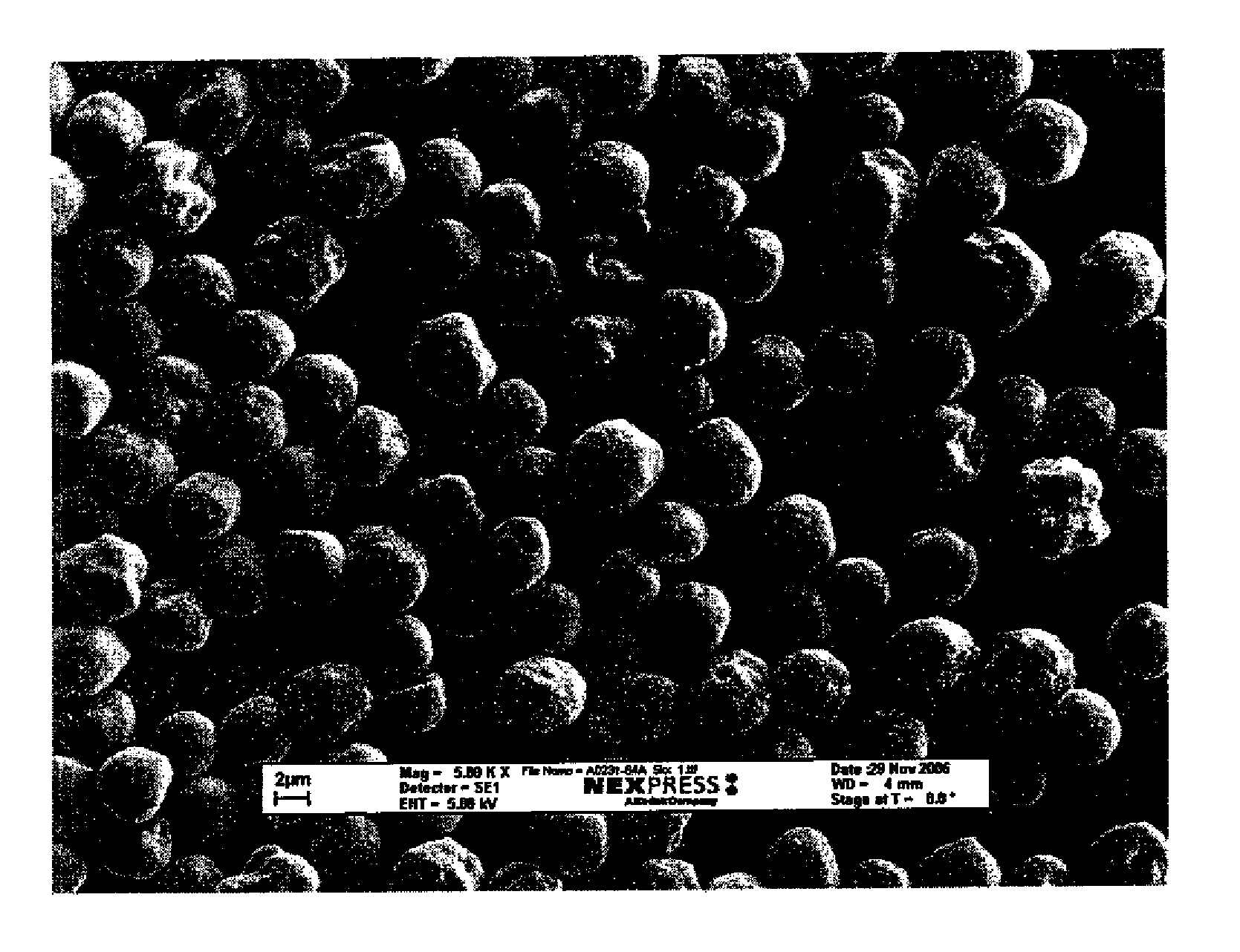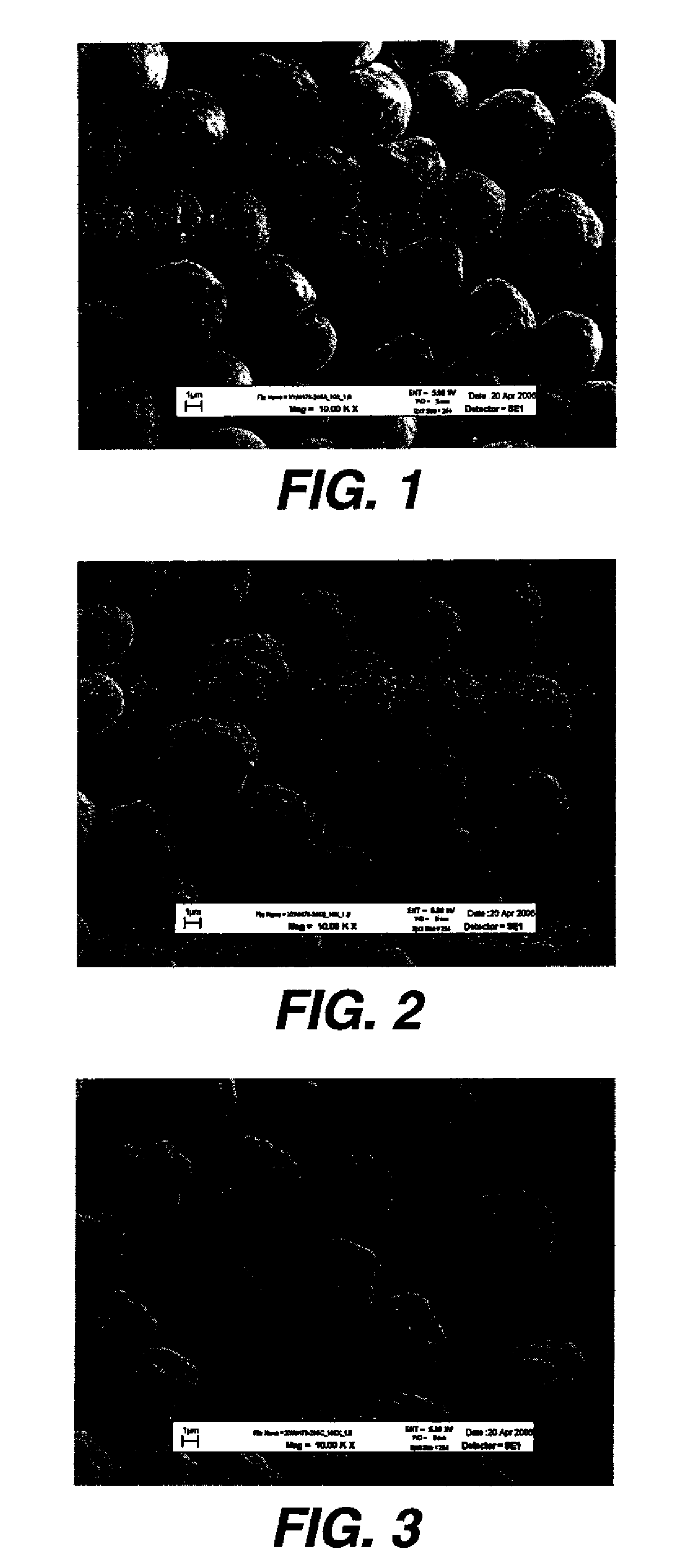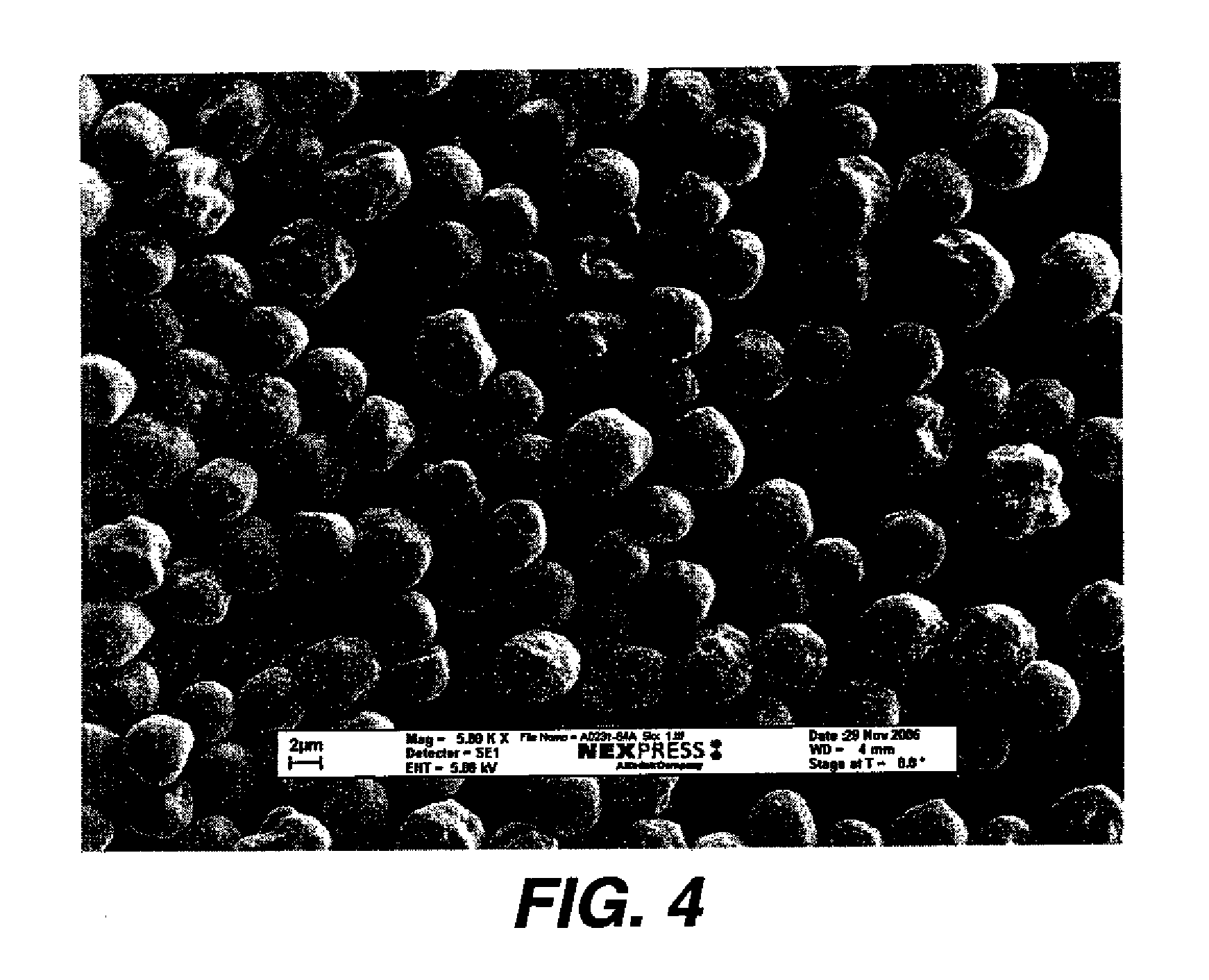Toner particles of controlled morphology
a technology of controlled morphology and toner particles, which is applied in the field of preparation of polymeric powders, can solve problems such as difficulty in scaling up using this method
- Summary
- Abstract
- Description
- Claims
- Application Information
AI Technical Summary
Benefits of technology
Problems solved by technology
Method used
Image
Examples
example 1
Preparation of Wax Dispersion
[0025]To a glass jar containing a mixture of wax and dispersant in ethyl acetate were added zirconia beads (diameter about 1.2 mm). The container was then placed on a (Sweco) powder grinder and the wax milled for one to three days. Afterwards, the beads were removed by filtration through a screen and the resulting solid particle dispersion was used for toner preparation as follows.[0026]Disp A.Polywax 500 (T-60 grade) (Baker Petrolite), 20.0 g[0027]Tuftec P2000 (AK Elastomer), 3.0 g[0028]Ethyl Acetate, 77.0 g[0029]Zirconia Beads, 1.2 mm, 100 mL[0030]Determined solid content of recovered dispersion: 17.4%
example 2
Comparative
[0031]An organic phase dispersion was prepared using 89.08 g of ethyl acetate. 19.78 g of Kao Binder E (Kao Specialties Americas LLC), 2.919 g of BASF Lupreton Blue SE 1163, and 13.22 g of the above wax dispersion A. The mixture was stirred overnight with a magnetic stirrer. This organic phase is mixed with an aqueous mixture prepared with 172.93 g of water, 1.1475 g of potassium hydrogen phthalate (KHP), 11.00 g of Nalco™ 1060 and 2.42 g of 10% promoter (poly(adipic acid-comethylaminoethanol)). This mixture was then subjected to very high shear using a Silverson L4R Mixer (sold by Silverson Machines, Inc.) followed by a Microfluidizer. Upon exiting, the solvent was removed from the particles so formed by rotary evaporator under reduced pressure. These particles were collected and washed with water. After drying, the resulting particles had a volume-averaged size of 6.03 μm and entirely spherical.
example 3
[0032]A dispersion was prepared using 73.45 g of ethyl acetate, 16.25 g of Kao Binder E 2.335 g of BASF Lupreton Blue SE 1163, 0.040 g of Compound 1 (zinc dimethyldithiocarbamate, SCA-1), and 7.93 g of the above wax dispersion A. The mixture was stirred overnight with a magnetic stirrer. This mixture was comprised of 4.67% pigment, 6.0% of Polywax 500, 0.20% of zinc dimethyldithiocarbamate (SCA-1), and 81.3% binder and comprised the organic phase in the evaporative limited coalescence process. The organic phase was then mixed with an aqueous phase prepared with 136.85 g of water, 0.918 g of potassium hydrogen phthalate (KHP), 8.80 g of Nalco™ 1060 and 1.936 g of 10% poly(adipic acid-comethylaminoethanol). This mixture was then subjected to very high shear using a Silverson L4R Mixer (sold by Silverson Machines, Inc.) followed by a Microfluidizer. Upon exiting, the solvent was removed from the particles so formed by rotary evaporator under reduced pressure. These particles were colle...
PUM
| Property | Measurement | Unit |
|---|---|---|
| temperature | aaaaa | aaaaa |
| diameter | aaaaa | aaaaa |
| volume-averaged size | aaaaa | aaaaa |
Abstract
Description
Claims
Application Information
 Login to View More
Login to View More - R&D
- Intellectual Property
- Life Sciences
- Materials
- Tech Scout
- Unparalleled Data Quality
- Higher Quality Content
- 60% Fewer Hallucinations
Browse by: Latest US Patents, China's latest patents, Technical Efficacy Thesaurus, Application Domain, Technology Topic, Popular Technical Reports.
© 2025 PatSnap. All rights reserved.Legal|Privacy policy|Modern Slavery Act Transparency Statement|Sitemap|About US| Contact US: help@patsnap.com



